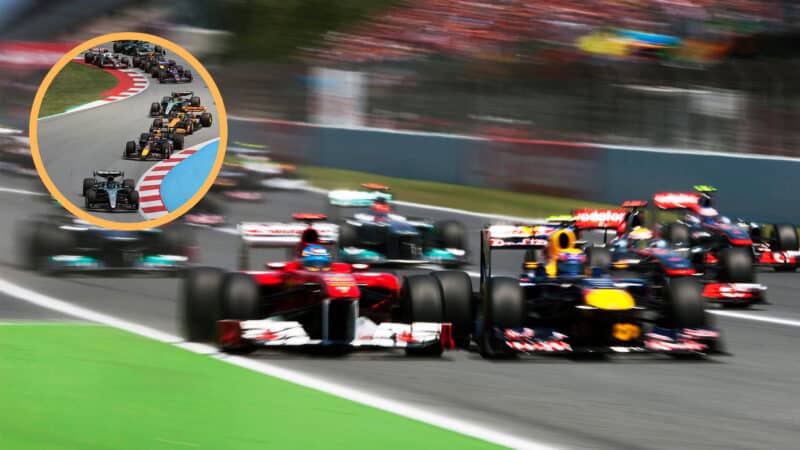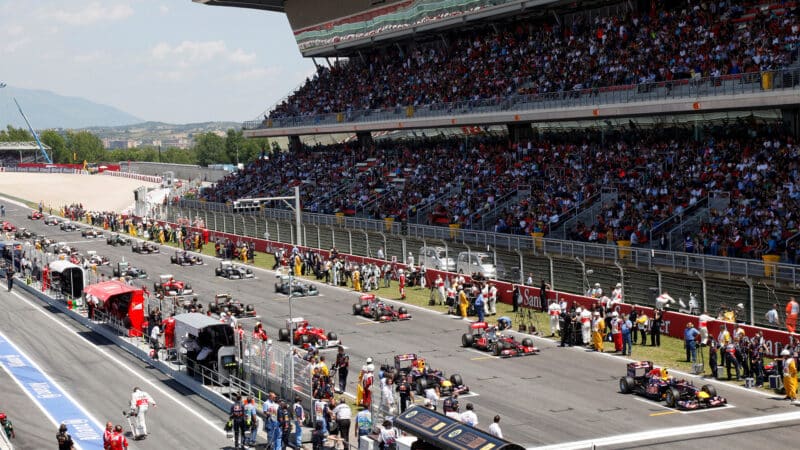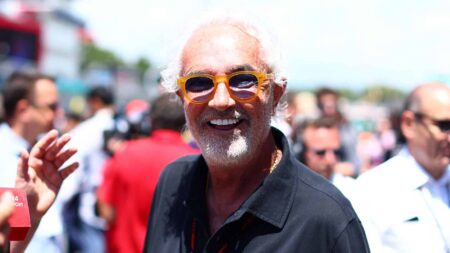This — 2011 — was Pirelli’s first year as the standard tyre supplier and it had gone adventurous on compounds. The demands made by Barcelona’s long, fast corners made this a nominal four-stop race! Remember those? As Red Bull struggled to get Vettel — who was suffering an intermittent KERS failure — into clear air to express his car’s superior performance, they were even considering a five-stop… So many stops made it ridiculously difficult for fans to keep hold of what was happening.
Vettel’s first attempt at undercutting the Ferrari had floundered on him not clearing traffic on his out-lap. He managed to do it at the second stops. Hamilton managed to overcut himself ahead of Alonso and Webber, with a huge in-lap. He then set chase for Vettel. Jenson Button, meanwhile, was running a very conservative three-stop in his McLaren and would later emerge ahead of the Alonso/Webber dice too, in third.
Running such aggressive strategies and defending or attempting undercuts left Alonso and Webber committed to a very long final stints – obliging them to fit the much slower hard tyres for 37 laps. The Ferrari was hopeless on the hard tyre. Webber did eventually get past it and the home hero who’d lit up the start would be a lapped fifth by the end.

Mark Webber passes Alonso, who would eventually finish fifth
Getty Images
Russell faced a similar dilemma on Sunday. His side-by-side dice with Norris in the second stint — which lasted from Turn 2 to Turn 7 — used up the last of his medium-compound tyres but it was still far too early to fit the softs. He had no more mediums left and the pitwall watched his rear tyre temperatures beginning to drop ominously – a sure sign they are close to finished – and his gap over Carlos Sainz’s Ferrari was reducing steadily. If they waited any longer, the tyres would drop off and he – and his closely-following team-mate Hamilton – would be undercut by the Ferrari. So he was obliged to come in with 25 laps still to go and also obliged therefore to take the unloved hard tyre. Hamilton was able to run long enough to get onto the soft tyre – and with that was able to pass Russell for third.
Which was one place lower than he managed in 2011. He’d kept the pressure on Vettel through the last two stints, but despite the latter’s KERS problems, track position decided it. There just wasn’t enough lap time difference despite Hamilton’s newer tyres for an on-track overtake to be feasible, though several times Hamilton got alongside and just 0.7sec separated them at the flag.
Norris of course made a thrilling late charge on Verstappen’s Red Bull too. But that time stuck behind Russell in the first stint was ultimately too much to come back from. Yes, Verstappen and Red Bull were managing the gap, but if he’d been obliged to push, Verstappen was pretty certain he could not have matched the late-stint times Norris was setting. Second is tough to take when a victory feels within your grasp. And that’s how it was for McLaren. In 2011 and ’24.




